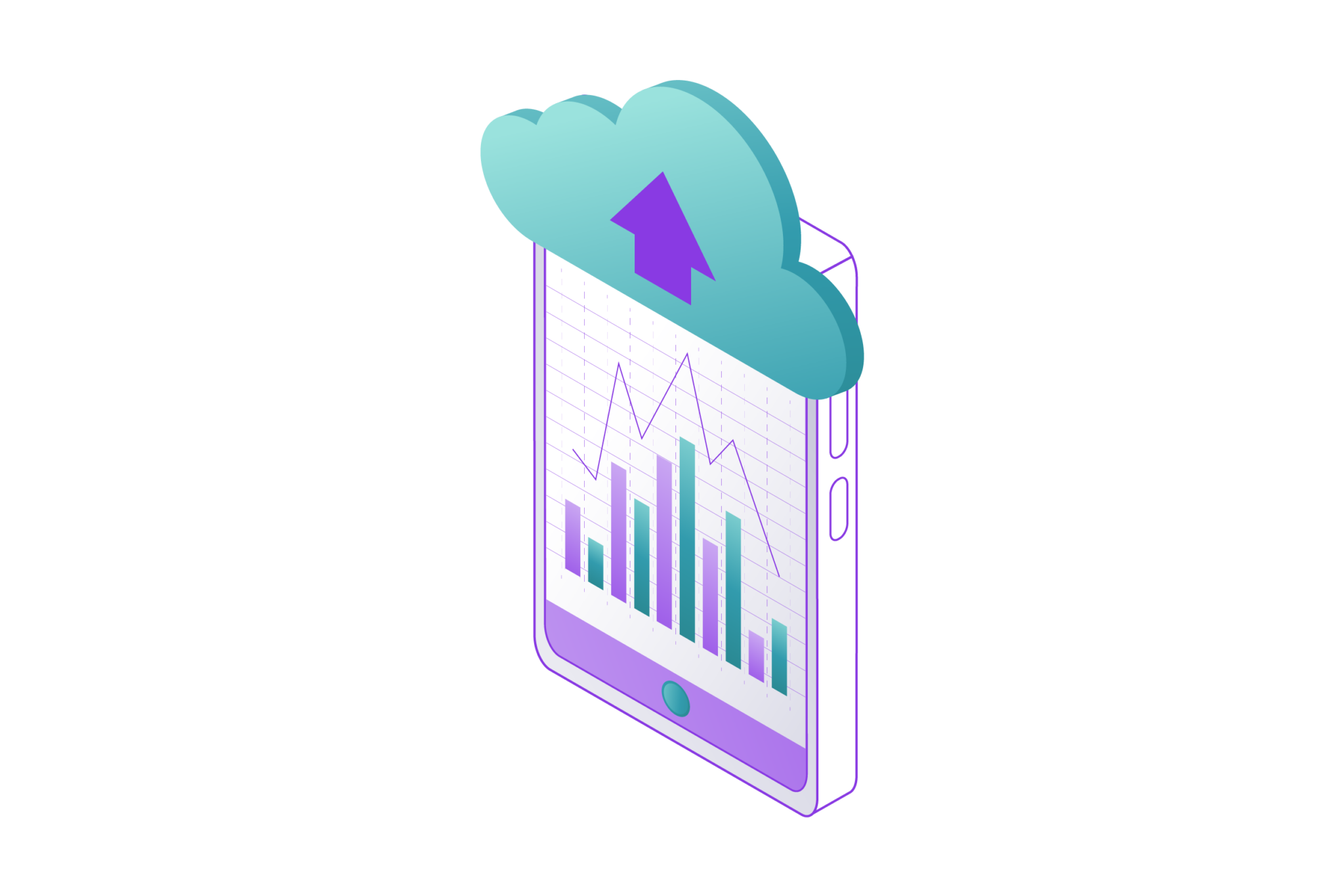
In the ever-evolving world of finance, the integration of technology into trading has been a game-changer, particularly through systematic trading strategies. These strategies leverage computational algorithms to make trading decisions, often minimizing the role of human emotion and bias. This article delves into the essence of systematic trading strategies, explaining how they function, their benefits, and the challenges they pose.
Systematic trading, often synonymous with algorithmic or automated trading, uses mathematical models to execute trades based on data and trends. These models are meticulously designed to identify opportunities and execute trades at optimal times, with speed and accuracy far surpassing human capabilities. As we continue, we will uncover various facets of systematic trading and how it’s shaping the future of investments.
The significance of these strategies cannot be overstated as they provide a structured approach to trading, reducing the randomness introduced by human intervention. This makes them an invaluable tool in a trader’s arsenal. Moving forward, this article will guide you through the core components, tools, and methods involved in systematic trading, providing a comprehensive understanding of this technological approach to the stock market.
Understanding Systematic Trading Strategies

Systematic trading strategies are a method of participating in financial markets using predefined rules for entry, exit, and risk management. These strategies are designed to remove emotional decision-making and enhance the consistency of trading activities. They rely heavily on quantitative models that use historical data to predict market movements and identify trading opportunities. Here are some key components and advantages of systematic trading:
- Algorithmic Execution: Systematic trading employs algorithms that automatically execute trades according to set rules. These algorithms are designed to optimize entry and exit points, manage trade sizes, and execute orders at the most favorable prices. By reducing the delay between decision and action, algorithmic execution minimizes the risk of slippage and ensures that trading strategies are implemented efficiently.
- Risk Control: One of the core principles of systematic trading is rigorous risk management. Systematic strategies are built with predefined risk parameters such as stop-loss orders, maximum drawdown limits, and position sizing rules. These parameters are designed to mitigate the impact of adverse market movements and protect the capital from significant losses, thereby providing a safety net that maintains the sustainability of the trading operation.
- Backtesting: Backtesting is a critical process in systematic trading where strategies are tested on historical data to evaluate their viability before being deployed in live markets. This process allows traders to identify and iron out any issues in the strategy under various market conditions. Effective backtesting helps in understanding the potential returns and the risk associated with the strategy, ensuring it meets the desired investment criteria.
Also Read: 10 Facts About Investing You Should Know
- Market Adaptability: Systematic strategies are not just static; they include adaptive mechanisms that adjust to changing market conditions. This adaptability can involve dynamic adjustments to the trading rules based on market volatility, economic indicators, or changes in market trends. The ability to adapt helps maintain the effectiveness of the trading strategy over time, even as market dynamics evolve.
- Diversification: By employing multiple systematic strategies or trading across a variety of asset classes and markets, these strategies can achieve a high level of diversification. Diversification helps in spreading risk and can reduce the volatility of the investment returns. It allows the portfolio to capture returns from different sources, thereby enhancing the overall stability and performance.
Systematic trading strategies leverage advanced technology and rigorous quantitative analysis to achieve a disciplined and methodical approach to trading. This not only helps in achieving consistent returns but also plays a crucial role in capital preservation over the long term.
Tools and Technologies in Systematic Trading

Systematic trading is a methodological approach that leverages automated algorithms and quantitative techniques to make trading decisions. This approach requires the use of advanced tools and technologies across various stages of trading operations, from data collection to execution. Here we delve deeper into the essential tools and technologies that are critical for the success of systematic trading strategies.
Data Analysis and Management Tools
Effective data management is foundational in systematic trading, where decisions are driven by precise data analysis. To manage and analyze vast amounts of market, economic, and alternative data, traders use robust database systems like SQL for structured data and NoSQL for more flexible schema-less data storage. For data analysis, Python is a preferred choice due to its extensive libraries such as pandas for data manipulation, NumPy for numerical data, and SciPy for scientific computing. These tools provide powerful data handling capabilities that facilitate the cleaning, processing, and analysis of complex datasets.
Algorithm Development Environments
Algorithm development is at the heart of systematic trading. This requires an environment that supports extensive testing and refinement of strategies. Python is prevalent in this area, supported by libraries like pandas for data handling, NumPy for high-performance numerical calculations, and machine learning libraries such as scikit-learn for predictive modeling. For strategy development and backtesting, platforms like backtrader and zipline provide comprehensive tools that simulate the deployment of trading strategies using historical data, allowing traders to refine their algorithms based on performance metrics.
Backtesting Platforms
Backtesting is critical to evaluate the effectiveness of trading strategies against historical data before real-world application. Advanced backtesting platforms like QuantConnect and Quantopian provide not only historical data but also the computational power to test and optimize strategies on a large scale. These platforms offer community features and access to peer and expert reviews, enhancing the robustness of the strategies through collaborative inputs and validation against varied economic scenarios.
Execution and Risk Management Systems
Reliable execution platforms are crucial for the real-time application of trading strategies. Systems such as MetaTrader and platforms provided by brokers like Interactive Brokers and TD Ameritrade are designed to ensure fast and reliable trade execution. These systems also incorporate comprehensive risk management tools, which help traders manage exposure by setting stop-loss orders, adjusting leverage, and monitoring performance in real-time to avoid significant losses during market volatility.
Machine Learning and AI
The integration of machine learning and AI is transforming systematic trading by enabling more complex analyses and predictive models that can adapt to new data. Libraries like TensorFlow and PyTorch facilitate the development of deep learning models that can identify patterns and predict market movements from large datasets. The use of AI extends to reinforcement learning, where algorithms learn optimal actions based on reward feedback loops, making them ideal for dynamic and evolving market conditions.
The effectiveness of systematic trading relies heavily on a sophisticated array of tools and technologies. These components work in concert to enable traders to develop, test, and execute automated strategies that can respond swiftly and effectively to ever-changing market conditions. This technological foundation is not static; it evolves continuously as advancements in data science and machine learning open new frontiers in automated trading.
Common Systematic Trading Strategies

Systematic trading strategies are essential tools for traders aiming to leverage algorithms and quantitative models to automate their trading decisions. These strategies help minimize emotional interference, ensure consistent decision-making, and can efficiently execute trades based on complex or large datasets. Below are some well-known systematic trading strategies:
- Trend-Following: Trend-following strategies are among the most straightforward and widely used in systematic trading. These strategies involve monitoring market trends and making trading decisions based on the direction and strength of these trends. Traders implementing this strategy typically use technical indicators such as moving averages, momentum oscillators, and trend lines to identify potential buying or selling opportunities. The primary assumption is that markets will continue in their established direction for a significant time, allowing traders to capitalize on large price movements. However, trend-following can lead to losses during market consolidations or when trends abruptly end.
- Mean Reversion: Mean reversion is based on the statistical concept that prices and returns eventually revert to their long-term mean or average. This strategy is particularly effective in range-bound or oscillating markets, where prices continuously fluctuate around a central value. Traders use statistical tools like standard deviations and z-scores to determine how far the current price is from its historical average and trade on the assumption that it will revert to that mean. This strategy often involves more frequent trades and requires precise timing to capture the short-term fluctuations in asset prices.
- Arbitrage Opportunities: Arbitrage is a sophisticated trading strategy that seeks to exploit price discrepancies of identical or similar financial instruments across different markets or forms. This could involve spot-futures arbitrage, where a trader takes advantage of the price difference between a commodity’s spot price and its future contract, or triangular arbitrage, which involves exchanging three different currencies to benefit from their relative values. Since these discrepancies are often small and may exist for a short time, arbitrage requires high-speed trading systems and sophisticated software to identify and execute trades quickly before the opportunity disappears. This strategy is generally considered low risk, as it is theoretically a risk-free profit, although execution risk and operational costs can impact the profitability.
Each of these strategies uses unique methodologies for analyzing market data, spotting trading opportunities, and executing trades efficiently. Depending on their risk tolerance, trading objectives, and the market environment, traders may choose one or blend multiple strategies to optimize their trading outcomes.
Benefits of Systematic Trading
Systematic trading, which utilizes algorithms and computer models for executing trades, provides numerous advantages over more conventional, manual trading approaches. Key benefits include:
- Increased Speed of Trade Execution: Systematic trading enables much faster trade execution than is possible manually. This rapid processing allows traders to capitalize on market opportunities almost instantaneously, a crucial advantage in markets that are highly dynamic.
- Higher Accuracy in Trades: By automating the trading process, systematic strategies reduce the risk of human error such as emotional decision-making or misinterpretation of market data. This results in more consistent and reliable trade execution.
- Backtesting Capability: One of the significant strengths of systematic trading is the ability to use historical data to test trading strategies. This backtesting confirms the effectiveness of a strategy before it is deployed, which can significantly reduce the risk of losses.
- Continuous Operation: Algorithms do not need rest, allowing systematic trading strategies to operate around the clock. This is particularly beneficial in global markets that are active across different time zones, ensuring that opportunities are never missed, even outside of normal trading hours.
Together, these factors make systematic trading a powerful tool for traders seeking efficiency, accuracy, and performance in their trading activities.
Challenges and Risks
Systematic trading strategies, which leverage algorithms and quantitative methods to execute trades, offer substantial potential to maximize returns and manage risk effectively. However, these strategies are also accompanied by significant challenges and risks that can undermine their effectiveness.
One of the primary concerns in systematic trading is the risk of overfitting models. This occurs when a strategy is excessively tuned to historical market data, making it potentially ineffective in real-world trading environments where market conditions can change rapidly. Overfitting leads to models that perform well on past data but fail to predict future market movements accurately.
Another critical risk is system failure, which can result from software glitches, hardware failures, or connectivity issues. Such failures can lead to significant losses, especially in high-frequency trading environments where trades are executed in milliseconds. It is crucial for traders to have robust systems in place and contingency plans to handle such failures promptly.
Also Read: 5 Methods of Macro Research That You Should Know
Unexpected market events, such as geopolitical incidents, sudden economic shifts, or major financial announcements, can also dramatically affect the performance of systematic strategies. These events can create extreme market volatility, against which even well-tested algorithms might not perform as expected.
Due to these risks, it is essential for traders to maintain a vigilant approach by continuously monitoring their trading systems and adapting their strategies in response to evolving market conditions. This includes regular updates to the algorithms and models used, rigorous backtesting against new data sets, and readiness to adjust parameters as market dynamics shift.
Conclusion
Systematic trading strategies represent a significant advancement in the field of investment trading. By integrating sophisticated algorithms and technological tools, these strategies offer a more disciplined, efficient, and potentially profitable approach to trading in financial markets. However, as with any investment strategy, they carry inherent risks and require thorough understanding and careful management.
The future of trading appears increasingly automated, with systematic strategies at the forefront. This transition not only promises to enhance the precision of trading operations but also to democratize trading, making sophisticated strategies accessible to a broader range of investors. As technology continues to evolve, so too will the strategies that traders use to stay ahead in the competitive world of finance.
In conclusion, whether you are a seasoned trader or a newcomer, understanding and utilizing systematic trading strategies can significantly alter how you interact with the market. They bridge the gap between technology and financial markets, offering a robust framework for navigating the complexities of trading and investment.
Disclaimer: The information provided by Quant Matter in this article is intended for general informational purposes and does not reflect the company’s opinion. It is not intended as investment advice or a recommendation. Readers are strongly advised to conduct their own thorough research and consult with a qualified financial advisor before making any financial decisions.

Joshua Soriano
As an author, I bring clarity to the complex intersections of technology and finance. My focus is on unraveling the complexities of using data science and machine learning in the cryptocurrency market, aiming to make the principles of quantitative trading understandable for everyone. Through my writing, I invite readers to explore how cutting-edge technology can be applied to make informed decisions in the fast-paced world of crypto trading, simplifying advanced concepts into engaging and accessible narratives.
- Joshua Soriano#molongui-disabled-link
- Joshua Soriano#molongui-disabled-link
- Joshua Soriano#molongui-disabled-link
- Joshua Soriano#molongui-disabled-link
